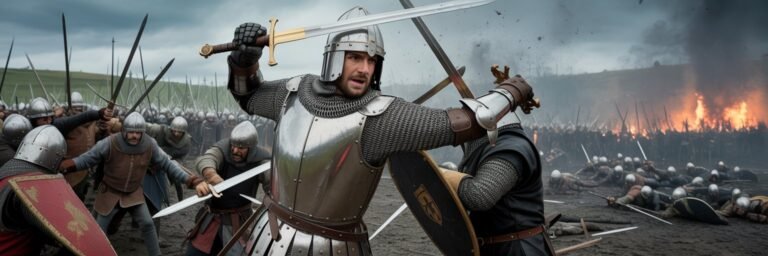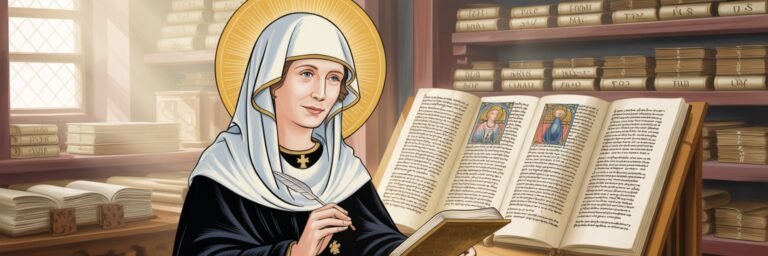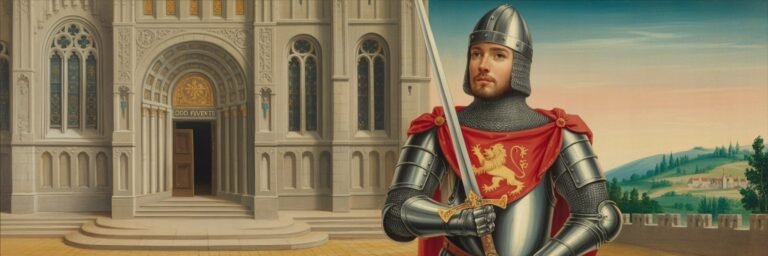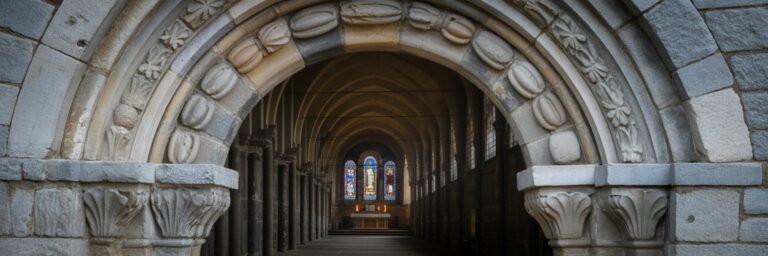INTRODUCTION
Delving into the rich tapestry of human history, no era remains more enigmatic than the Middle Ages – a period renowned both for its grandeur and mystery but also controversial for its violent, pious, and authoritarian nature. Filled with bloody wars, enlightened thinkers, and timeless symbols—the Middle Ages reveals a complex, often contradictory, portrait of human existence. Every event in this era, acted like a compass, pointing the course for future societies.
HISTORICAL BACKGROUND
The Middle Ages, stretching from the fall of the Western Roman Empire in 476 CE to the advent of the Renaissance in the 14th century, was dominated by royalty, religion, hearty and daring adventurers and scholars belonging to an educated elite. This era, littered with invasions by Goths, Franks, Vandals, Mongols, and Norsemen, amongst others, was influential in reshaping Europe’s political, social and cultural landscape.
Trade and cultural exchanges flourished, significantly influencing intellectual life. Despite widespread ignorance, many scientific breakthroughs took place. The Church, the dominant institution, exerted huge control over every facet of life and yet, also served as the reservoir of learning, acting as the cradle for arts and architecture. Medieval life was thus a blend of fear, faith, luminous creativity, and brutal violence.
THEORIES AND INTERPRETATIONS
Contrary to the infamous term “Dark Ages,” many historians argue that Middle Ages was not a period of barbarism but instead a crucial and transformative period. Although, innovations were not as groundbreaking as they were in Antiquity or during the Renaissance, medieval society was characterized by gradual, but significant, advancement like the development of crucial farming techniques such as crop rotation.
Yet, others opine on the negative aspects: centuries characterized by tremendous inequality, religious intolerance, and violence. The Inquisition, Crusades, and witch trials are indicative of an era fraught with religious paranoia and brutality, while the feudal system enforced stark societal divisions. The Black Death, which wiped out up to 60% of Europe, was another devastating period in the Middle Ages.
MYSTERIES AND CONTROVERSIES
The Middle Ages contain a labyrinth of controversies. The Murder of Thomas Becket, which occurred in 1170 in Canterbury cathedral, remains one of the most notorious moments in English history. This murder, ordered by King Henry II, led to widespread outrage and Becket was swiftly canonized.
One of the most contentious moments in religious history centres around the Great Schism of 1054, which saw the Christian church in the West (Roman Catholic) and the East (Eastern Orthodox) officially split over intricate doctrinal differences and political disputes. This schism would create lasting religious divides across Europe.
The Children’s Crusade of 1212 casts another grim shadow. Unarmed and filled with naive conviction, thousands of children marched towards Jerusalem under the belief that their innocence would peacefully reclaim the Holy Land. Their fate remains largely unclear, with grim suggestions they were sold into slavery or perished before reaching the Holy Land.
SYMBOLISM AND CULTURAL SIGNIFICANCE
The Middle Ages was a breeding ground of timeless symbols—including the Knight, the Cross, the Crown and the Unicorn—each carrying cultural significance. The Knight symbolized honor and chivalry, epitomizing courage, loyalty and service to a noble cause.
Religion played a central role, with the Cross becoming a profound symbol of Catholic Christianity. The Crown mirrored the immense power, wealth, and authority of the monarch. The Unicorn, an elusive and mystical creature, was seen as a symbol of purity and strength.
The Middle Ages also witnessed remarkable structures like gothic cathedrals conveying metaphysical symbolism. These towering structures were humanity’s attempt to reach out to the divine, demonstrating mankind’s yearning, humility and ingenuity.
MODERN INVESTIGATIONS
Investigating the Middle Ages has transformed due to advanced archaeological methods, sophisticated forensic science, and progressive historiography. Technologies like carbon dating and DNA analysis permit a more precise understanding and interpretation of past events. For example, research on the medieval pandemic, the Black Death, has identified genetic links to the modern plague.
Modern historians utilize various theoretical perspectives including feminist and Marxist interpretations, affording a multi-dimensional understanding on the era devoid of Eurocentric bias.
LEGACY AND CONCLUSION
The legacy of the Middle Ages is irrefutable. This period laid the foundation of modern Western societies. From the establishment of universities, creation of common law and birth of countries, to the conceptualization of human rights by philosophers like Thomas Aquinas—the Middle Ages was instrumental in defining our present.
The Middle Ages was a reality layered with complexity, neither dark nor enlightened but a blend of both. It offered humankind a gallimaufry of beauty, genius, ambition, brutality, and ignorance. No doubt, the controversial moments of the Middle Ages have fueled both our fascination and our trepidation. They served to shape history’s narrative with a rich palette of colors, some sublime, others grotesque yet all crucial in shaping the tapestry we call human history.






